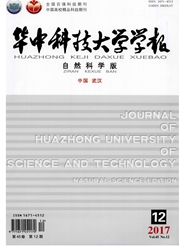

 中文摘要:
中文摘要:
通过3片砌体墙试件在低周期水平往复荷载下的抗震试验,研究喷射玻璃纤维聚合物(GFRP)加固和碳纤维布加固对开门洞无筋砌体墙片抗震性能的影响,从加固墙片的破坏形态、抗震抗剪承载力、滞回特性、刚度退化及耗能能力等方面比较了2种不同加固方案对开门洞砌体墙片的抗震加固效果.试验结果表明:采用喷射玻璃纤维聚合物加固试件的极限承载力、延性系数和耗能系数较未加固试件分别提高了142.8%,33.9%和41.2%,其提升抗剪承载力、改善抗震性能以及保障门洞安全方面也均优于碳纤维布加固方法;喷射玻璃纤维聚合物加固层可以与砌体有效黏结并协同工作,发挥显著的抗震加固效应.
 英文摘要:
英文摘要:
By testing the aseismic experiments of three masonry wall specimens under horizontal cyclic loading with constant gravity loads, the aseismic behaviors of the unreinforced masonry walls with door openings strengthened with carbon fibre reinforced polymer (CFRP) sheets and sprayed chopped glass fibre reinforced polymer (GFRP) were investigated. The aseismic strengthening effects were compared in aspect of the failure modes, shear capacity, hysteresis response, deterioration of rigidity, and ability of energy dissipation. The experimental results indicate that the ultimate capacity, ductili- ty factor, and energy dissipation coefficient of the specimen strengthened with sprayed GFRP are in- creased by 142.8%, 33. 9~, an~t 41. 2%, respectively, compared with that of the unstrengthened specimen, and the increasing degree of shear capacity, the improvement of seismic behavior, and the guarantee of opening safety are significantly superior to that of the specimen strengthened with epoxy- based CFRP; the sprayed GFRP can bond tightly and work well together with the masonry to play a critical role in earthquake resistance.
 同期刊论文项目
同期刊论文项目
 同项目期刊论文
同项目期刊论文
 期刊信息
期刊信息
